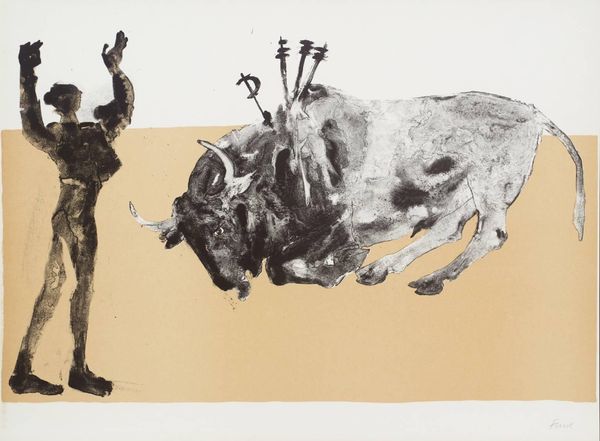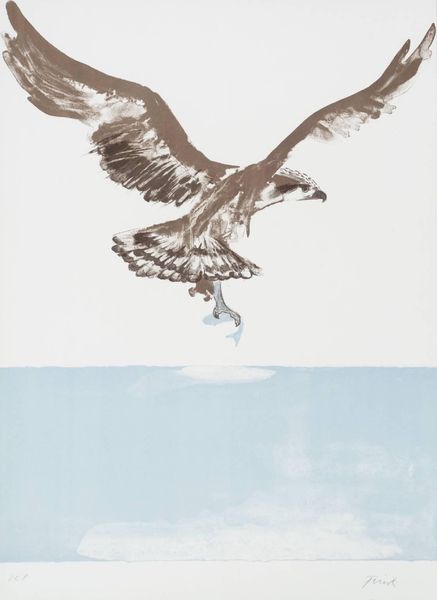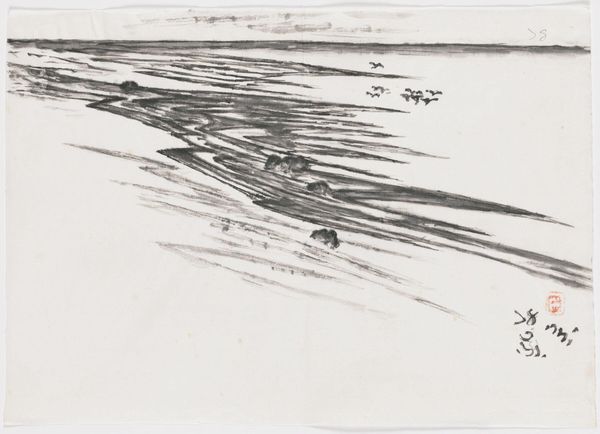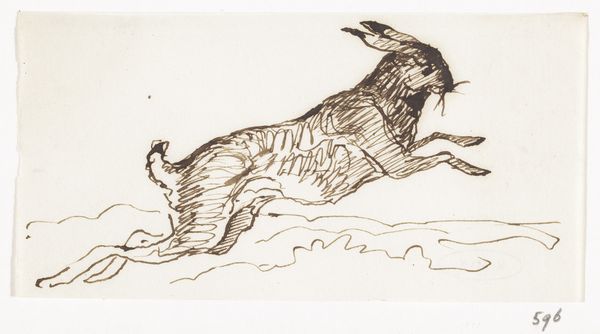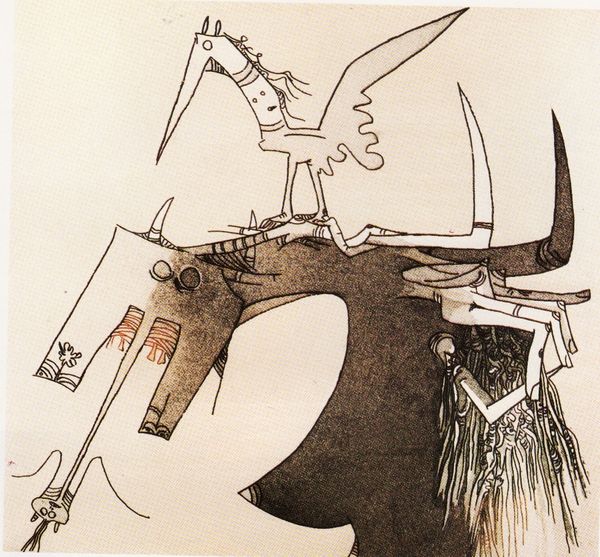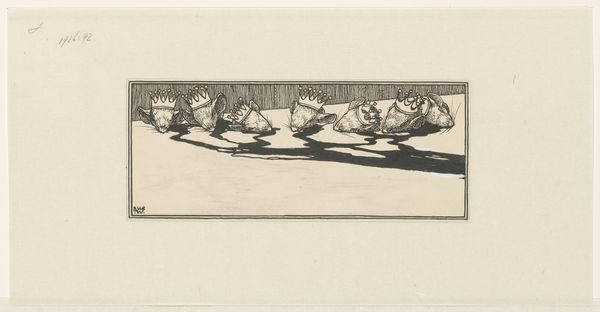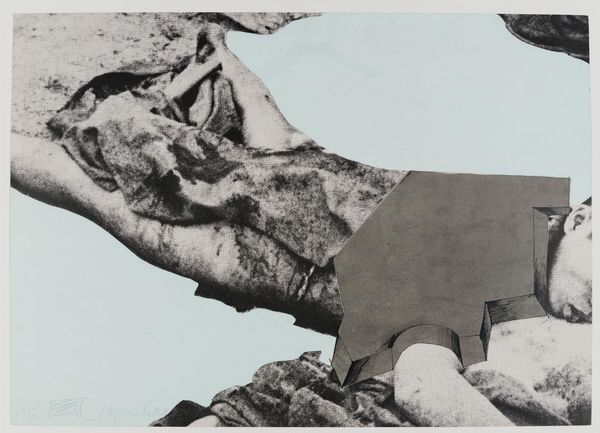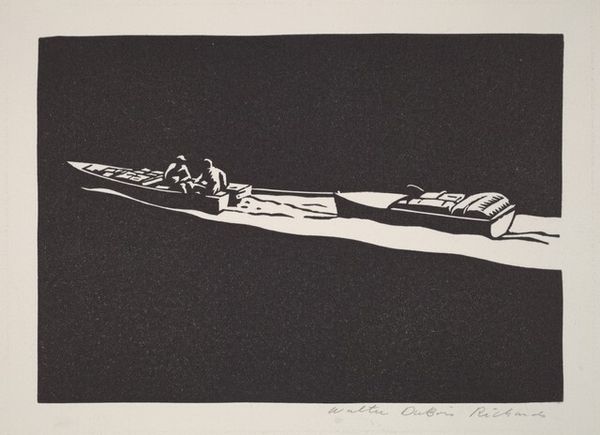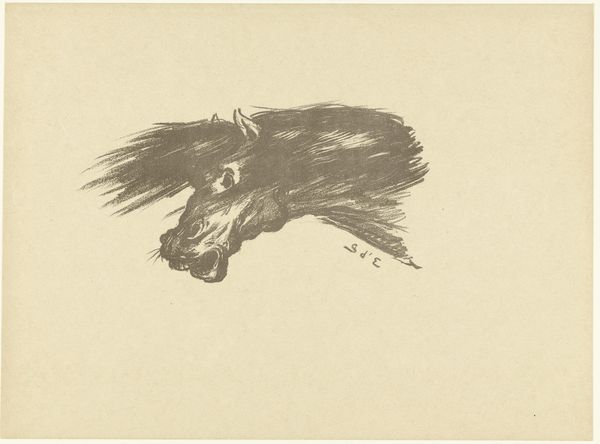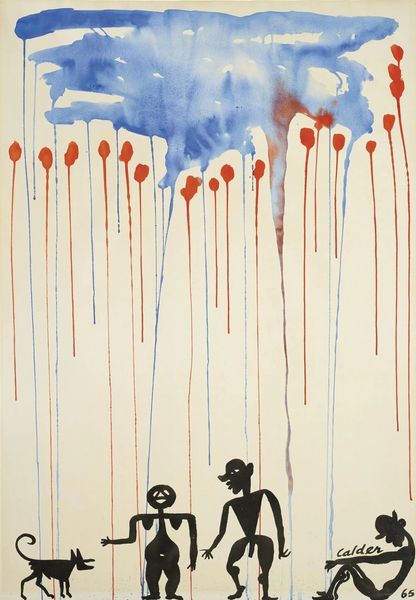
Dimensions: unconfirmed: 556 x 762 mm
Copyright: © Colin Self. All Rights Reserved, DACS 2014 | CC-BY-NC-ND 4.0 DEED, Photo: Tate
Editor: This is Colin Self's "Guard Dog on a Missile Base, No. 1" from around 1967. The contrast between the snarling dog and the missiles is striking. What underlying anxieties do you think Self is exploring here? Curator: The dog, often a symbol of loyalty and protection, here seems almost rabid, a monstrous corruption of its inherent nature. Note how Self juxtaposes this with the missiles. Editor: You mean like twisting familiar symbols? Curator: Exactly! Self presents familiar symbols of both domesticity and national defense. The missiles shrink into the distance, as though the dog’s primal aggression fuels them. It is a commentary on the Cold War. Editor: I see how he uses these images to give insight into the political climate. Curator: Indeed. Art can reveal how cultural memory informs our anxieties, echoing through generations. Editor: This piece certainly provides a stark reflection on that!
Comments
tate 7 months ago
⋮
http://www.tate.org.uk/art/artworks/self-guard-dog-on-a-missile-base-no-1-t01850
Join the conversation
Join millions of artists and users on Artera today and experience the ultimate creative platform.
tate 7 months ago
⋮
From 1962, after the Cuban Missile crisis, to the end of the 1960s, Self’s work depicted the ever-present threat of nuclear war. In 1959 Self had stayed in a farm near an American airbase in Norfolk, where he said missiles pointed at the sky, and guard dogs howled ‘like wolves’. For the artist ‘the conceptual idea of nuclear warfare became mixed with that of animal nature and aggression’. In this work Self portrays a battery of Bristol Bloodhound missiles, deployed in the 1960s to defend Britain from the potential threat from Russian nuclear bombers. Gallery label, October 2019
